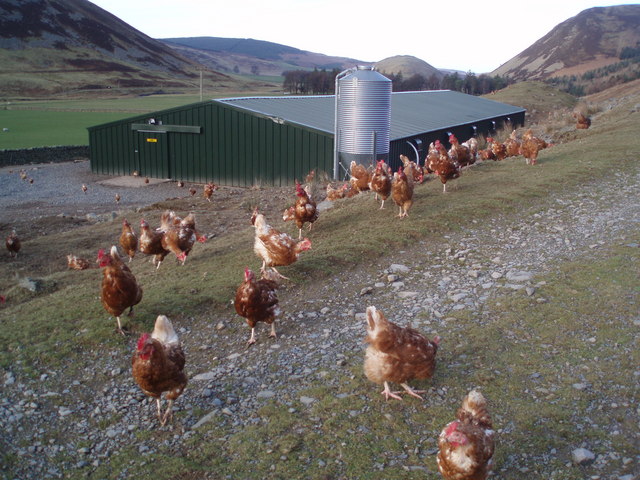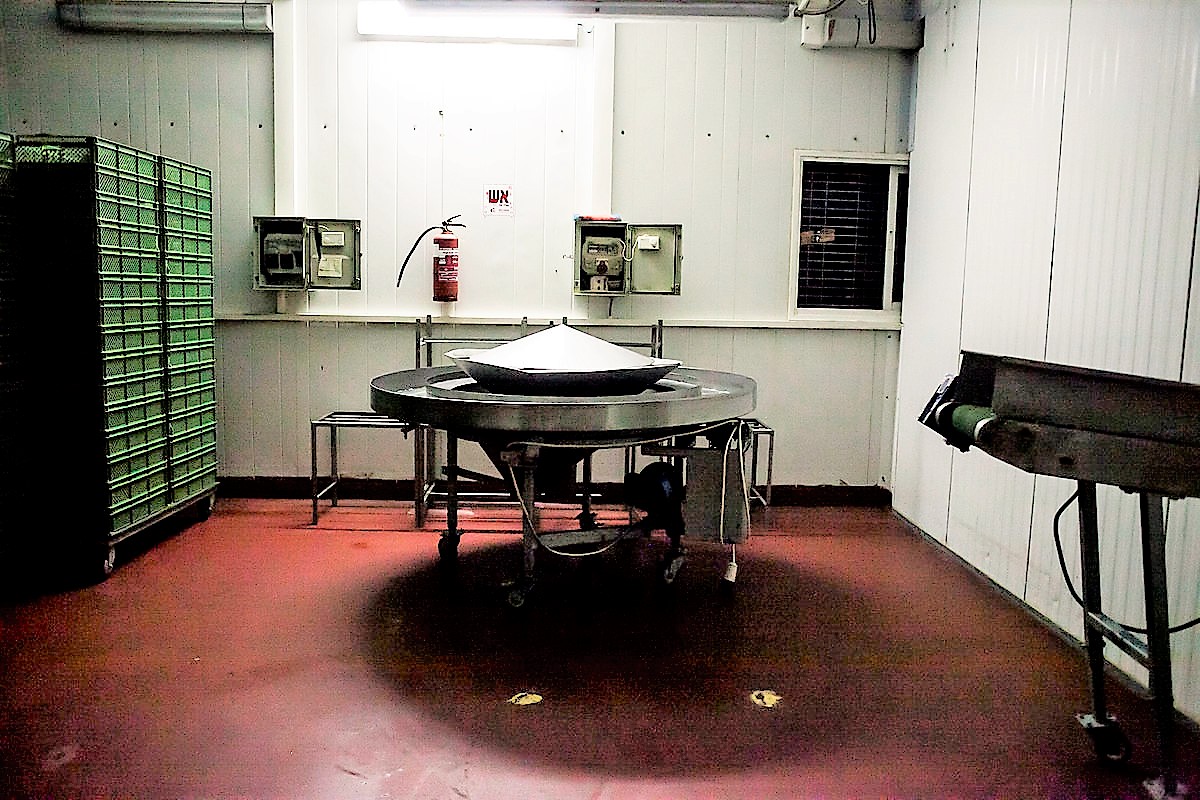|
Egg Code
Egg marking is a form of egg labelling that includes an ''egg code'' stamped on the egg itself. In the EU there is a producer code regulated by law since 2004. It allows consumers to distinguish free range eggs and organic farming eggs from the industrial caged hen production. Egg mark contents An egg mark may contain a number of information parts - in the EU only the producer code is required. Additional information may be printed along with the date of production being the most common to find. Other information may contain the method of production especially in the non-EU world where the numbered levels do not apply. Note that egg labelling is used worldwide but mostly in the form of egg carton labels. In most countries there are legal definitions on the designation of the egg size, production method, packager identification and best-before dates. As there is more space on the carton there has been no tendency to create an egg code that is seen on the stamps used for egg mark ... [...More Info...] [...Related Items...] OR: [Wikipedia] [Google] [Baidu] |
ISO 3166-1
ISO 3166-1 (''Codes for the representation of names of countries and their subdivisions – Part 1: Country codes'') is a standard defining codes for the names of countries, dependent territories, and special areas of geographical interest. It is the first part of the ISO 3166 standard published by the International Organization for Standardization. It defines three sets of country codes: * ISO 3166-1 alpha-2 – two-letter country codes which are the most widely used of the three, and used most prominently for the Internet's country code top-level domains (with a few exceptions). * ISO 3166-1 alpha-3 – three-letter country codes which allow a better visual association between the codes and the country names than the alpha-2 codes. * ISO 3166-1 numeric – three-digit country codes which are identical to those developed and maintained by the United Nations Statistics Division, with the advantage of script (writing system) independence, and hence useful for people or systems us ... [...More Info...] [...Related Items...] OR: [Wikipedia] [Google] [Baidu] |
Eggs (food)
Humans and human ancestors have scavenged and eaten animal eggs for millions of years. Humans in Southeast Asia had domesticated chickens and harvested their eggs for food by 1,500 BCE. The most widely consumed eggs are those of fowl, especially chickens. Eggs of other birds, including ostriches and other ratites, are eaten regularly but much less commonly than those of chickens. People may also eat the eggs of reptiles, amphibians, and fish. Fish eggs consumed as food are known as roe or caviar. Bird and reptile eggs consist of a protective eggshell, albumen (egg white), and vitellus (yolk, egg yolk), contained within various eggshell membrane, thin membranes. Egg yolks and whole eggs store significant amounts of protein and choline, and are widely used in cookery. Due to their protein content, the United States Department of Agriculture formerly categorized eggs as ''Meats'' within the Food Guide Pyramid (now MyPlate). Despite the nutritional value of eggs, there are some pot ... [...More Info...] [...Related Items...] OR: [Wikipedia] [Google] [Baidu] |
Free Range
Free range denotes a method of farming husbandry where the animals, for at least part of the day, can roam freely outdoors, rather than being confined in an enclosure for 24 hours each day. On many farms, the outdoors ranging area is fenced, thereby technically making this an enclosure, however, free range systems usually offer the opportunity for the extensive locomotion and sunlight that is otherwise prevented by indoor housing systems. ''Free range'' may apply to meat, eggs or dairy farming. The term is used in two senses that do not overlap completely: as a farmer-centric description of husbandry methods, and as a consumer-centric description of them. There is a diet where the practitioner only eats meat from free-range sources called ethical omnivorism. In ranching, free-range livestock are permitted to roam without being fenced in, as opposed to intensive animal farming practices such as the concentrated animal feeding operation. In many agriculture-based economies, ... [...More Info...] [...Related Items...] OR: [Wikipedia] [Google] [Baidu] |
Organic Certification
Organic certification is a certification process for producers of organic food and other organic agricultural products, in the European Union more commonly known as ecological or biological products.Labelling, article 30 o''Regulation (EU) 2018/848 of the European Parliament and of the Council of 30 May 2018 on organic production and labelling of organic products and repealing Council Regulation (EC) No 834/2007.''/ref> In general, any business directly involved in food production can be certified, including seed suppliers, farmers, food processors, retailers and restaurants. A lesser known counterpart is certification for organic textiles (or organic clothing) that includes certification of textile products made from organically grown fibres. Requirements vary from country to country (List of countries with organic agriculture regulation), and generally involve a set of production standards for growing, storage, processing, packaging and shipping that include: * avoidance of ... [...More Info...] [...Related Items...] OR: [Wikipedia] [Google] [Baidu] |
Debeaking
Debeaking, beak trimming (also spelt beak-trimming), or beak conditioning is the partial removal of the beak of poultry, especially layer hens and turkeys although it may also be performed on quail and ducks. Most commonly, the beak is shortened permanently, although regrowth can occur. The trimmed lower beak is somewhat longer than the upper beak. A similar but separate practice, usually performed by an avian veterinarian or an experienced birdkeeper, involves clipping, filing or sanding the beaks of captive birds for health purposes – in order to correct or temporarily alleviate overgrowths or deformities and better allow the bird to go about its normal feeding and preening activities. Amongst raptor-keepers, this practice is commonly known as "coping". Beak trimming is most common in egg-laying strains of chickens. In some countries, such as the United States, turkeys routinely have their beaks trimmed. In the UK, only 10% of turkeys are beak trimmed. Beak trimming is a p ... [...More Info...] [...Related Items...] OR: [Wikipedia] [Google] [Baidu] |
Chick Culling
Chick culling or unwanted chick killing is the process of separating and killing unwanted (male and unhealthy female) chicks for which the intensive animal farming industry has no use. It occurs in all industrialised egg production, whether free range, organic, or battery cage. However, some certified pasture-raised egg farms are taking steps to eliminate the practice entirely. Worldwide, around 7 billion male chicks are culled each year in the egg industry. Because male chickens do not lay eggs and only those in breeding programmes are required to fertilise eggs, they are considered redundant to the egg-laying industry and are usually killed shortly after being sexed, which occurs just days after they are conceived or after they hatch. Some methods of culling that do not involve anaesthetics include: cervical dislocation, asphyxiation by carbon dioxide, and maceration using a high-speed grinder. Maceration is the primary method in the United States. Maceration is often a pref ... [...More Info...] [...Related Items...] OR: [Wikipedia] [Google] [Baidu] |
Bioland
Bioland is the largest organic-food association in Germany.''Zahlen, Daten, Fakten: Die Bio-Branche 2013'' , at ''boelw.org'' (PDF; 32 pages, 6.8 MB, 12. Februar 2013). Retrieved 24 June 2014. Its standards exceed EU minimum requirements. History During the 1920s, a number of agricultural movements began with the goal of countering the effect of industrialization and globalization on food production. One of these was the ''Jungbauernbewegung'' (or ''Bauernheimatbewegung'', "farmer '' |
Demeter International
The Biodynamic Federation Demeter International is the largest certification organization for biodynamic agriculture, and is one of three predominant organic certifiers.Commission for Environmental Cooperation and TerraChoice Environmental Services Inc, ''Environmental and Other Labelling of Coffee: the role of mutual recognition, supporting cooperative action'', May 2004Document text Its name is a reference to Demeter, the Greek goddess of grain and fertility. It is a non-profit umbrella organisation with 46 members organisations in 36 countries around the world, representing both the global biodynamic movement and the Demeter certified biodynamic farms. The organization incorporates 19 certifying Demeter organizations, and the rest of the certification is done by the international certification committee. The Demeter Biodynamic Certification is used in over 65 countries to verify that biodynamic products meet international standards in production and processing. The Demeter symbo ... [...More Info...] [...Related Items...] OR: [Wikipedia] [Google] [Baidu] |
Country Code Top-level Domain
A country code top-level domain (ccTLD) is an Internet top-level domain generally used or reserved for a country, sovereign state, or dependent territory identified with a country code. All ASCII ccTLD identifiers are two letters long, and all two-letter top-level domains are ccTLDs. In 2018, the Internet Assigned Numbers Authority (IANA) began implementing internationalized country code top-level domains, consisting of language-native characters when displayed in an end-user application. Creation and delegation of ccTLDs is described in RFC 1591, corresponding to ISO 3166-1 alpha-2 country codes. While gTLDs have to obey international regulations, ccTLDs are subjected to requirements that are determined by each country’s domain name regulation corporation. With over 150 million domain name registrations today or as of 2022, ccTLDs make up about 40% of the total domain name industry. Country code extension applications began in 1985. The registered country code extensions in t ... [...More Info...] [...Related Items...] OR: [Wikipedia] [Google] [Baidu] |
Pastured Poultry
Pastured poultry is a sustainable agriculture technique that calls for the raising of laying chickens, meat chickens (broilers), guinea fowl, and/or turkeys on pasture, as opposed to indoor confinement. Humane treatment and the perceived health benefits of pastured poultry are causing an increase in demand for such products. Joel Salatin of Swoope, Virginia, helped to reintroduce the technique at Polyface Farm, and wrote his book ''Pastured Poultry Profits'' to spread the idea to other farmers. Andy Lee and Herman Beck-Chenoweth expanded on Salatin's techniques, and created some of their own. The American Pastured Poultry Producers' Association (APPPA) was formed to promote pastured poultry. Its membership consists largely of pastured poultry farmers. Though pasture feeding improves the nutritive quality of ruminant meats, the effect of pasture feeding on poultry meat composition is not well established. One trial showed low impact of pasture feeding on vitamin E and fatty acid ... [...More Info...] [...Related Items...] OR: [Wikipedia] [Google] [Baidu] |







